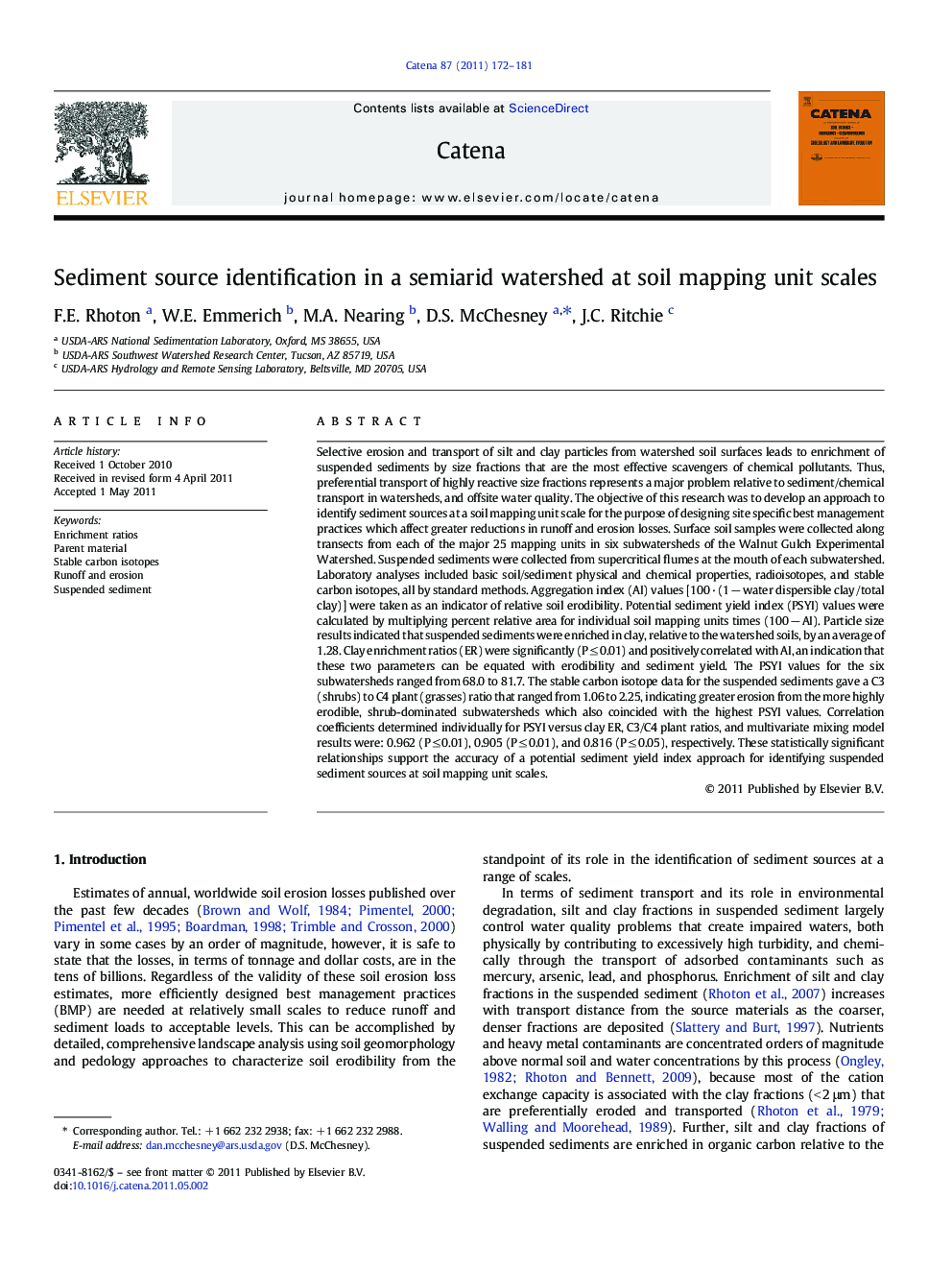| کد مقاله | کد نشریه | سال انتشار | مقاله انگلیسی | نسخه تمام متن |
|---|---|---|---|---|
| 4571922 | 1332136 | 2011 | 10 صفحه PDF | دانلود رایگان |

Selective erosion and transport of silt and clay particles from watershed soil surfaces leads to enrichment of suspended sediments by size fractions that are the most effective scavengers of chemical pollutants. Thus, preferential transport of highly reactive size fractions represents a major problem relative to sediment/chemical transport in watersheds, and offsite water quality. The objective of this research was to develop an approach to identify sediment sources at a soil mapping unit scale for the purpose of designing site specific best management practices which affect greater reductions in runoff and erosion losses. Surface soil samples were collected along transects from each of the major 25 mapping units in six subwatersheds of the Walnut Gulch Experimental Watershed. Suspended sediments were collected from supercritical flumes at the mouth of each subwatershed. Laboratory analyses included basic soil/sediment physical and chemical properties, radioisotopes, and stable carbon isotopes, all by standard methods. Aggregation index (AI) values [100 · (1 − water dispersible clay / total clay)] were taken as an indicator of relative soil erodibility. Potential sediment yield index (PSYI) values were calculated by multiplying percent relative area for individual soil mapping units times (100 − AI). Particle size results indicated that suspended sediments were enriched in clay, relative to the watershed soils, by an average of 1.28. Clay enrichment ratios (ER) were significantly (P ≤ 0.01) and positively correlated with AI, an indication that these two parameters can be equated with erodibility and sediment yield. The PSYI values for the six subwatersheds ranged from 68.0 to 81.7. The stable carbon isotope data for the suspended sediments gave a C3 (shrubs) to C4 plant (grasses) ratio that ranged from 1.06 to 2.25, indicating greater erosion from the more highly erodible, shrub-dominated subwatersheds which also coincided with the highest PSYI values. Correlation coefficients determined individually for PSYI versus clay ER, C3/C4 plant ratios, and multivariate mixing model results were: 0.962 (P ≤ 0.01), 0.905 (P ≤ 0.01), and 0.816 (P ≤ 0.05), respectively. These statistically significant relationships support the accuracy of a potential sediment yield index approach for identifying suspended sediment sources at soil mapping unit scales.
► Sediment and chemical sources are precisely located.
► Site specific best management practices are developed.
► Water and soil quality are improved.
Journal: CATENA - Volume 87, Issue 2, November 2011, Pages 172–181